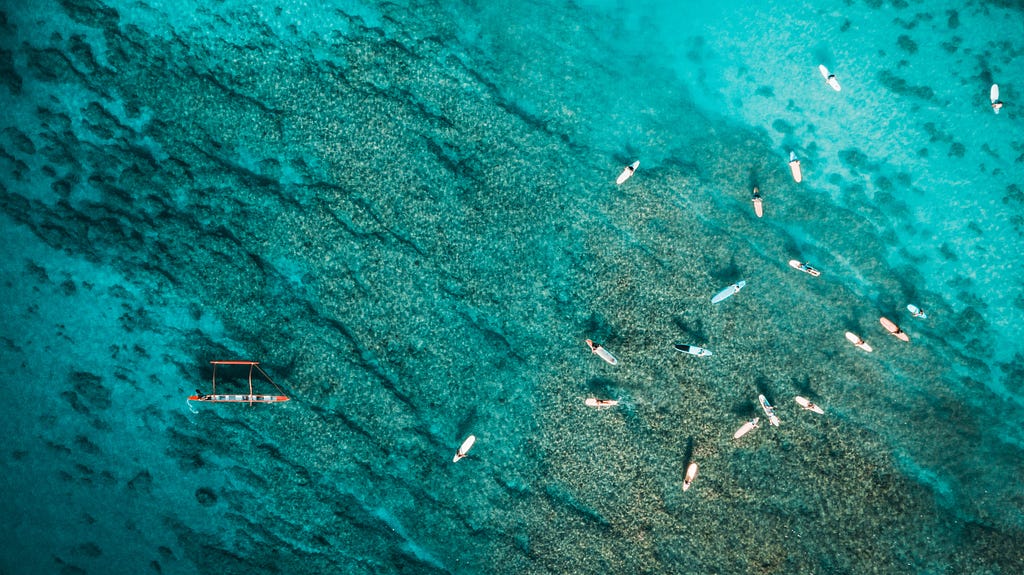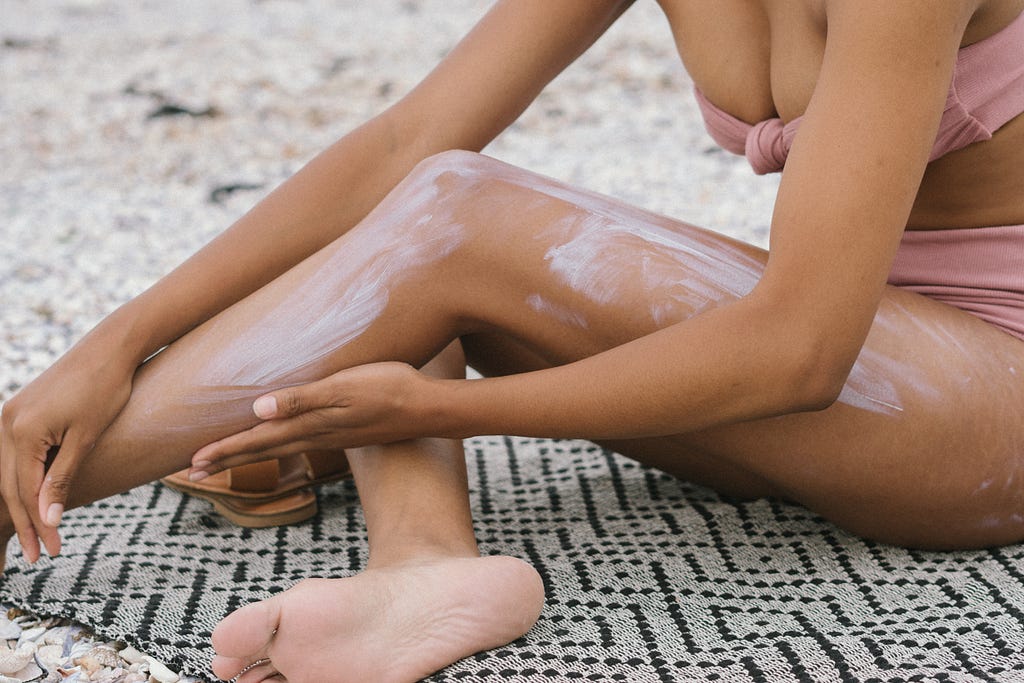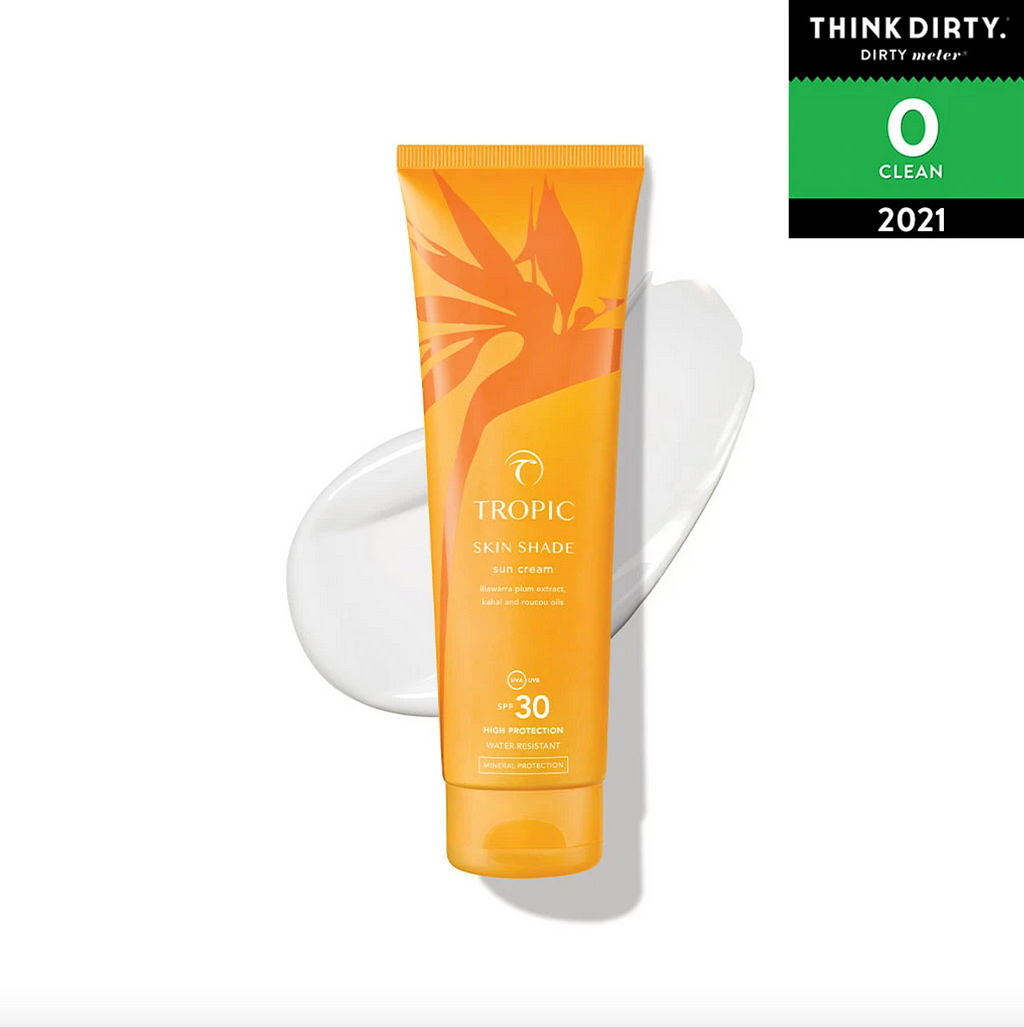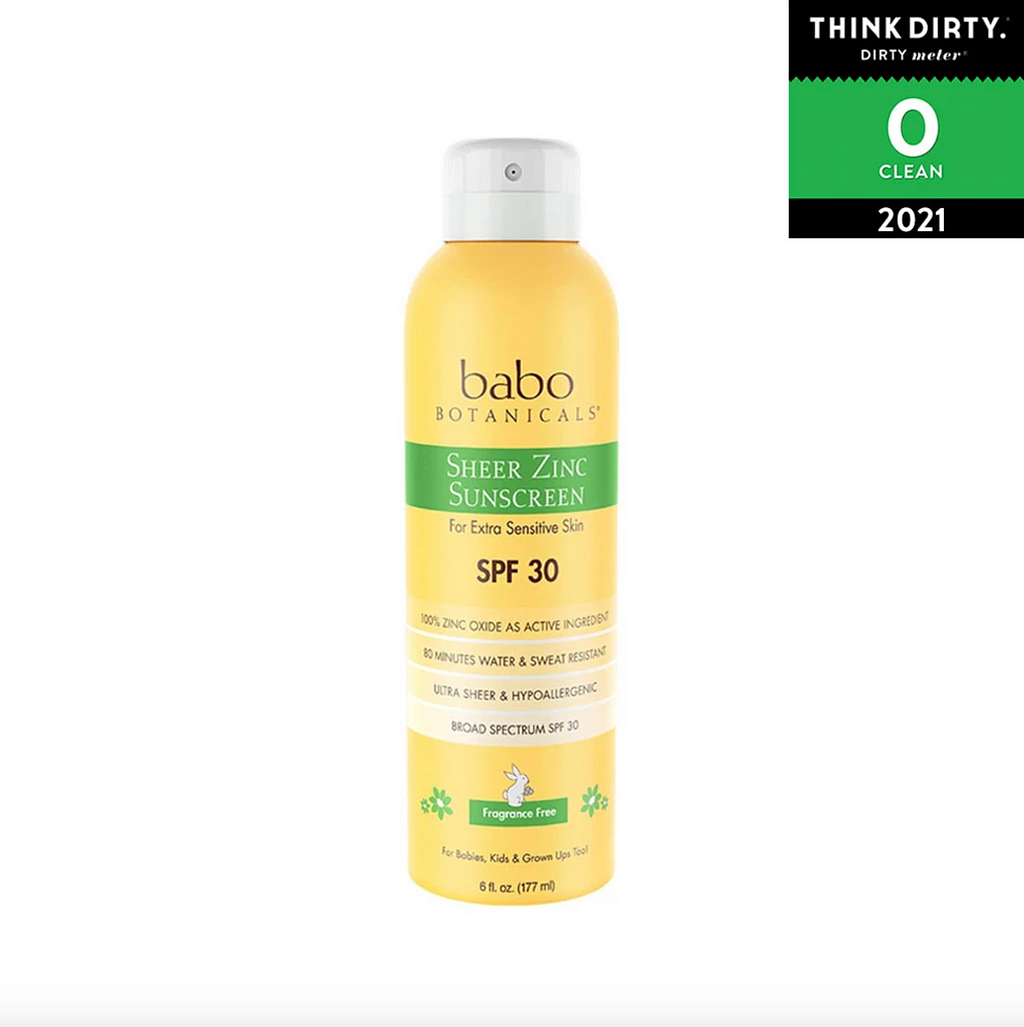
This blog post is part of a paid partnership with all brands mentioned. All opinions and information shared in this post is our own interpretation of a trusted source.
If you’ve stocked up on any sunscreen to protect your skin from the rays this summer, you’ve likely noticed that many sunscreens include (or don’t include) messaging on their packaging that reads “Reef-Safe”. If you’ve ever wondered what this term means, or why certain sunscreens are considered safer for coral reefs, this post is for you!
Like many terms and buzzwords commonly used in the personal care industry, terms like “Reef-Safe” and “Reef-Friendly” have no legal definition or set meaning.
Long story short, no sunscreen is completely safe for a coral reef. Any sunscreen worn into the water introduces foreign compounds into the aquatic ecosystem, with an estimated 6000 tons of sunscreen washing into reefs yearly. Coral reefs are popular sites for swimmers, and heavy activity by the reefs leads to higher concentrations of sunscreen ingredients in the local ecosystem.
It’s impossible to overstate the significance of coral reefs on Earth, and the benefits that they provide as a part of our natural environment. Coral reefs, living organisms made up of tiny animals called polyps, only cover 1% of the ocean floor but house over 1 million species. Algae called zooxanthellae work in tandem with the polyps and photosynthesize to give the polyps energy, and in turn the algae give coral their vibrant colors.
For ingredient newbies, there are two types of sunscreen: physical (aka mineral) and chemical. Physical sunscreen uses either Zinc Oxide and/or Titanium Dioxide to shield your skin from UV. Chemical sunscreens use any combination of Avobenzone, Homosalate, Octisalate, Octocrylene, and Oxybenzone, ingredients that work by converting UV rays into heat, causing the rays to release from your skin rather than penetrate it.
The evidence demonstrating the severely harmful effects of chemical sunscreen ingredients on coral reefs and marine life is well-documented, leading Hawai’i to ban the sale of sunscreens containing either Oxybenzone or Octinoxate in 2018.
The chemicals in sunscreen cause the coral to expel the zooxanthellae, leading to the phenomenon known as coral bleaching. Without the symbiotic relationship from the algae, the coral will most likely die. Research has demonstrated that bleaching and DNA damage can occur rapidly even with extremely low concentrations of sunscreen. Chemical UV filters induce the lytic viral cycle in corals, essentially triggering the coral to self destruct. Studies have shown increasing rates of coral bleaching and DNA damage correlated with increasing levels of oxybenzone. The chemical is also a skeletal endocrine disruptor, causing the delicate coral to harden and ossify.
Additionally, Octocrylene, Homosalate, Octisalate, Oxybenzone and Octinoxate have all been detected in fish. Octocrylene was found to accumulate in zebrafish and affect brain and liver development. Another study found that Oxybenzone had a much more significant impact on the mortality and feeding behavior of clownfish than Non-Nano Titanium Dioxide.
The National Parks Service advises that use of Non-Nano Zinc Oxide or Titanium Dioxide formulas are the safest possible ingredients for reefs. “Non-nano” refers to the size of the mineral particles used in the formula, and means the particles are 100 nanometers in diameter or more. However, the existing research on safety based on particle size is lacking.

Some evidence suggests that Titanium Dioxide nanoparticles can cause zooxanthellae expulsion, but mortality was not certain as the coral showed signs of recovery. One study did not find a difference of toxicity from Nano or Non-Nano minerals in Daphnia magna, a small crustacean often used in ecotoxicology studies. However, a different study showed that Nanoparticles of Titanium Dioxide had highly toxic effects on Daphnia magna after 72 hours of exposure. Another demonstrated that Zinc Oxide Nanoparticles could potentially alter photosynthesis and nitrogen cycling in ecologically important biofilms.
There is a lack of research on the true impact of sunscreen on marine life. As always, we want our readers to have all the available information so that they can make their own informed choices. Based on what we know, mineral sunscreen formulas are likely safer for marine life. Be sure to check your ingredient lists when purchasing, as chemical sunscreens are often advertised as Reef-Safe or Reef-Friendly. For example, this Banana Boat sunscreen is advertised as Reef-Friendly, but contains Avobenzone, Homosalate, Octisalate, Octocrylene, and Oxybenzone. We encourage the use of safer sunscreens in order to help preserve delicate aquatic ecosystems and our marine neighbors. Check out some of our picks below or click this link to see all of the products.



Is Reef-Safe Sunscreen Really Reef Safe? was originally published in Think Dirty on Medium, where people are continuing the conversation by highlighting and responding to this story.